


Framed or unframed, desk size to sofa size, printed by us in Arizona and Alabama since 2007. Explore now.
Shorpy is funded by you. Patreon contributors get an ad-free experience.
Learn more.

- Alas, hidden from view
- Exclusive pump
- Details, Details
- What's that building to the left of the tower?
- Coal Barges
- Bromo-Seltzer
- Inner harbor
- The Basin
- What a headache!
- Giant stepladder?
- Baldwin 62303
- Baldwin VO-1000
- Cold
- No expense spared
- Tough Guys
- Lost in Toyland
- And without gloves
- If I were a blindfolded time traveler
- Smoke Consumer Also Cooks
- Oh that stove!
- Possibly still there?
- What?!?
- $100 Reward
- Freeze Frame
- Texas Flyer wanted
- Just a Year Too Soon
- WWII -- Replacing men with women at the railroad crossing.
- Yes, Icing
- You kids drive me nuts!
- NOT An Easy Job
Print Emporium
The Alvin: 1905
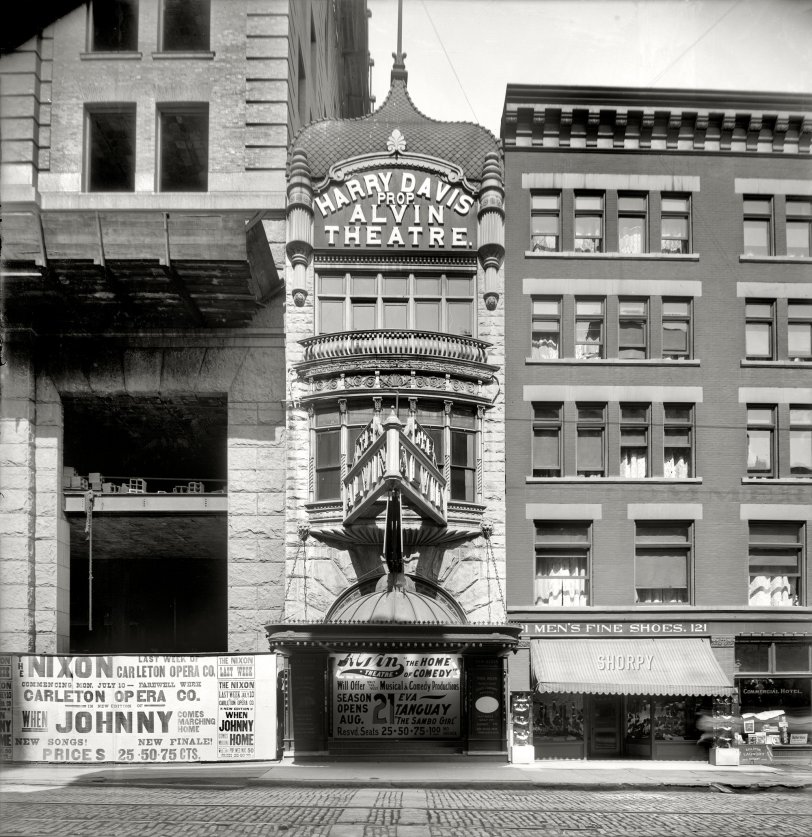
Pittsburgh circa 1905. "Alvin Theatre." Coming soon: Eva Tanguay, "The Sambo Girl." 8x10 inch glass negative, Detroit Publishing Company. View full size.
+111
Below is the same view from July of 2016.
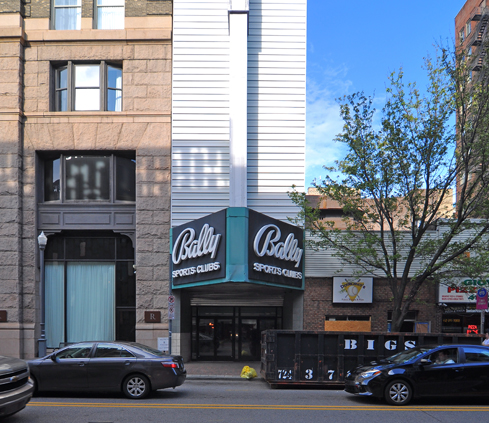
Commercial Hotel
What sort of "commerce" might be conducted at the Commercial Hotel (on the right)?
"America's Prettiest Theatre"
Apparently, even the dressing rooms were well-appointed. The conservatory on the main floor featured a fountain that sprayed "Lily of the Nile" perfume. While all the public areas were well-appointed and luxurious (a diamond collection, reputedly worth $100,000, owned by Charles L, Davis, the Alvin's owner), a special lounge for ladies was especially so. It featured a white grand piano, white upholstered furnishings, and white satin pillows. Davis, himself, handed out silver spoons and photos of the male stars to unattended ladies at the ladies' matinees.
Below are photos of the "Green room" at the Alvin, and the "Bridal Eve" painted curtain in the theatre. "Pittsburgh in stages: two hundred years of theater" By Lynne Conner
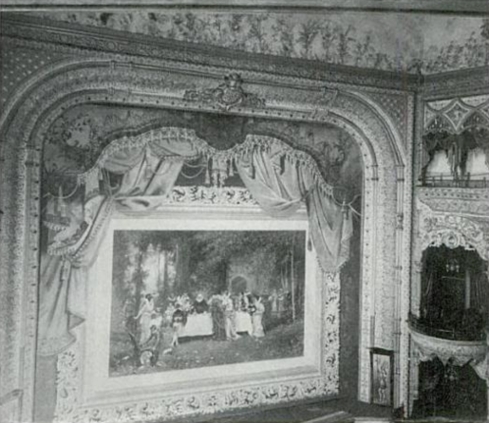
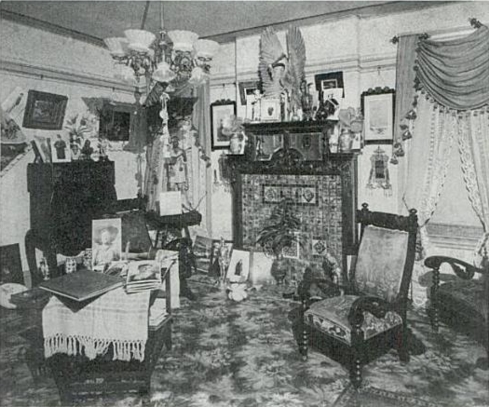
What's your bid?
For the 1905 issue of Scientific American in the Barbershop window, mint condition.
Common floor plan for theatres of the day
The ill-fated Iroquois Theatre in Chicago was built on the same principle, with a narrow storefront and an L-shaped extension curling around the adjacent building.
It was bigger than it looked
Built in 1891 at 119 6th Street, the Alvin seated 2000 and had a stage that was 48 feet deep. Sometime in the late 30s, the auditorium roof partially collapsed. The theatre was rebuilt on a plan by famous atmospheric designer John Eberson and reopened in 1941 as the 2100-seat J. P. Harris Theatre. It was renamed the Gateway in 1961 and operated until 1980. The building is still there, most recently housing the City Club.
The building still under construction at left in the pic contained two theatres on its completion. It's now the Renaissance Hotel and still houses the Byham Theatre.
Alt-Alvin
The Alvin's roof collapsed in 1940 and the building was either remodeled or rebuilt as the J. P. Harris Theatre, eventually renamed the Gateway Theatre. In 1980 it was remodeled as a health club.
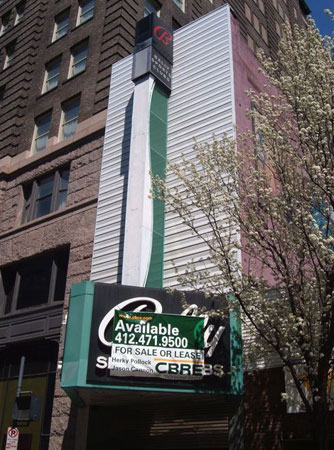
Fit as a fiddle
This building is now a fitness center. The imposing stone structure next to it is a hotel, the Renaissance. There's still a theater next to the hotel now, the Byham, a small, ornately decorated venue with frescoes on the ceiling. Highly recommended.
Glorious
It looks like it would specialize in "short subjects."
Make way for Eva
Or rather, stay out of Eva's way. The eccentric music hall performer (1879-1947), whose fans included Aleister Crowley, once was fined for shoving a stagehand down a flight of stairs.
Her signature song was "(They Say I'm Crazy but) I Don't Care":
http://www.archive.org/details/EvaTanguay.
Other hits included "That's Why They Call Me Tabasco" and "I'd Like to be an Animal in the Zoo." The last was featured in "The Sambo Girl," so the lucky patrons of the Alvin Theatre got to hear it.
She is said to haunt the Cohoes Music Hall near Albany, New York.

Still There, Sort Of
The building next door under construction is what would eventually become the Gayety Theater and still stands. The Alvin Theater was located at 119 6th Street. Interestingly, the current building at that location has retained the distinctive type of sign above the sidewalk (it is unclear whether the same structure exists under a more modern facade).
Lady Gaga circa 1905
Slate did a story on Eva Tanguay a couple years ago, calling her the first rock star.
From the article, her costuming sounds intriguing and yet familiar in 2011.
She was a clothes horse, famous for her lavish wardrobe budget, whose details she leaked to the press. Her performances were fashion shows as much as concerts; in the course of a 30-minute vaudeville appearance, she would change outfits 10 times. The costumes, which Tanaguy claimed to have designed herself, were avant-garde and architectural: hats that rose several feet above her head, constructed from ribbons, bells, leaves, ostrich plumes; gowns made of feathers, beads, dollar bills, seashells, coral. A particular cause célèbre was Tanguay's "$40 dress"—a garment fashioned from 4,000 pennies. (It weighed 45 pounds.) When "Salome-mania" swept vaudeville in 1908, Tanguay made sure that her Dance of the Seven Veils was the raciest, her dress the skimpiest. "I can fit the entire costume in my closed fist," she told reporters.
http://www.slate.com/id/2236658/
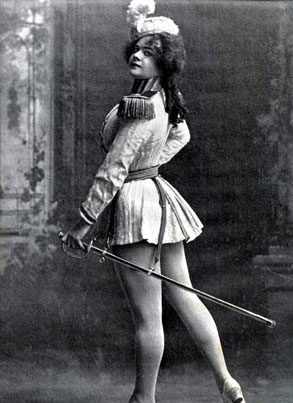
Seats all of 12
Careful walking in as you may hit not one but both sidewalls. The adjacent buildings are like a Play-Doh machine squeezing out the Alvin.
























On Shorpy:
Today’s Top 5